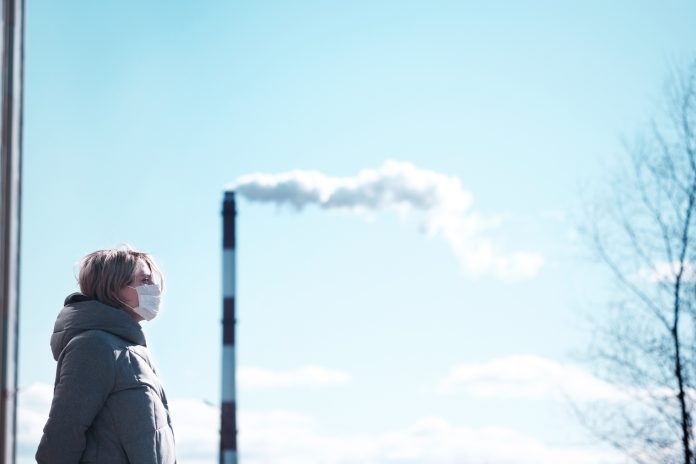Air pollution poses a significant environmental health risk, resulting in approximately 6.7 million premature deaths annually due to both ambient and household air pollution. Mitigating risk requires a multidisciplinary approach that spans policy, industry, and the health sector.
Lorna Rothery discussed this topic with Heather Adair-Rohani, Unit Head of Air Quality, Energy and Health at the World Health Organization
There is a sound evidence base around the health effects of air pollution, but what is known about the potential effects associated with low or ultra-low concentrations of air pollution?
In 2005, the World Health Organization (WHO) published guideline values, setting the limit for particulate matter at 10 micrograms per cubic meter (µg/m3). However, in a recent update in 2021, WHO updated its air quality guidelines, recommending a maximum annual average concentration of 5 micrograms per cubic meter for fine particulate matter (PM2.5). This change reflects the increasing evidence indicating that health risks related to air pollution exist even at lower levels.
We have a substantial amount of epidemiological literature, primarily from high-income countries in Western Europe and North America, where pollution levels are significantly lower than in many other parts of the world. Despite this, we still observe statistically significant health risks associated with air pollution.
In fact, the new lower value was based on the average of the five lowest fifth percentile levels measured in a systematic review of the epidemiological literature. While the specific average value lies between 4 and 5 micrograms per meter cubed, the actual guideline value was rounded to 5 micrograms per meter cubed. At this level, studies show statistically significant risks for non-accidental mortality and risks related to specific health outcomes.
There is a risk to health at all levels of exposure to fine particulate matter. Currently, there are a number of studies demonstrating that even low levels of air pollution significantly increase health risks, including non-accidental mortality, circulatory and respiratory diseases, as well as lung cancer. Thus, a considerable health risk remains even at low pollution levels.
How can people mitigate the effects of air pollution, particularly within their homes?
The factors affecting indoor air quality largely depend on your location.
In many areas worldwide, homes lack proper ventilation, meaning that open windows are often the primary method for exchanging air. In heavily polluted regions, indoor air can be just as contaminated as outdoor air. This is particularly the case for some low- and middle-income countries, where, in addition to polluted outdoor air, indoor household combustion activities also contribute significantly to indoor air pollution. This pollution mainly arises from inefficient cooking, heating, and lighting methods, such as open fires or stoves that burn wood or charcoal. People who rely on these methods are exposed to harmful pollutants in close quarters. To mitigate indoor air pollution in these settings, it is vital to transition to exclusive use of cleaner fuels and technologies for cooking, heating, and lighting.
In settings where electricity is commonly used, affordable and adequate, individuals at higher risk or more sensitive to the exposure to air pollution, investing in a good air filtration system can help reduce exposure to air pollutants, provided financial resources exist to do so. Another effective measure is opening windows when outdoor air quality is acceptable. Furthermore, HVAC and air conditioning systems with quality filters can also be used to enhance indoor air quality if properly used and maintained.
Other factors contributing to indoor air pollution include the types of materials used in your home, such as fabrics and other chemical sources. Radon is another natural indoor pollutant that can be addressed through building regulations. Assessing these materials and their potential contributions to pollution is an important means to reduce exposure.
Understanding the levels of indoor air pollution in your home is crucial. While outdoor air pollution is often monitored, indoor air quality measurement is less common. Taking initial measurements can help identify areas for improvement. Another important consideration is dampness and mould, as they are additional sources of indoor air pollution. The indoor air quality guidelines outline recommendations for managing humidity levels, among other actions, to reduce these risks.
Ultimately, addressing indoor air pollution depends on the specific building, location, and pollution sources present. Starting with measurements is key, followed by identifying and managing specific pollutants to which you are exposed. At WHO, we provide decision-makers and implementing partners with guidelines addressing various pollutants, including those from combustion, dampness, and mould, along with health guidance on effective mitigation measures.
To what extent do we understand the different sources of air pollution and their associated burden of disease? Which industries or sectors would benefit from obtaining additional data?
It’s very context-specific when discussing air pollution, and each country or city must identify its sources of pollution to act. Generally, there are some common causes. For instance, the inefficient use of energy is a significant contributor to air pollution, whether it occurs during power generation, in residential settings, or vehicle emissions. Energy efficiency, particularly with vehicles, plays a vital role in emissions levels and consequently air pollution exposure.
In domestic settings, energy use is a significant source of air pollution, as contaminants can easily escape outdoors, particularly in low- and middle-income countries. For example, black carbon, a component of fine particulate matter, is a pollutant that poses serious health risks and can be largely attributed to household fuel combustion, with estimates suggesting that around 50% of black carbon globally originates from the use of household biomass.
Another major contributor to global air pollution is the burning of solid waste, including not only trash but also agricultural crop residues. Minimizing consumption and implementing sustainable, integrated solid waste management systems can help reduce air pollution-related health risks.
The transportation sector is another obvious source; vehicle emissions significantly contribute to air pollution. Interestingly, studies indicate that a considerable amount of daily exposure to air pollution can occur while sitting in traffic, particularly in heavily polluted areas. Therefore, it is essential for countries and cities to accurately map their pollution sources using source apportionment methods, which can help identify the sources of pollutants.
It’s also important to note that many pollution sources can travel from surrounding areas to urban environments. While cities are indeed significant contributors to air pollution, even if all mitigation measures are implemented within the city, pollution from surrounding industrial activities or inefficient energy usage in peri-urban or rural areas can still affect urban populations.
To address these issues effectively, it’s essential to tackle both urban and surrounding sources of pollution. Policymakers can utilize source apportionment databases to help identify specific pollution sources in their regions. By collecting and providing data for these models, researchers can take significant steps toward a better understanding of pollution.
Encouraging knowledge exchange between industry, academia, and policymakers will enhance our understanding of where key interventions can be made. This collaboration will enable us to offer evidence-based guidance on how various sources can reduce their emissions.
What are some key considerations for improving the safety of residential, commercial, and healthcare settings?
We’re exploring various sources of guidance available to improve our environments. For instance, we have guidelines on housing that focus on how to enhance the construction of buildings. This can help increase natural ventilation without compromising indoor air quality or temperature regulation. This way, we can avoid relying on air conditioning systems that may be powered by diesel generators, which can recirculate air pollution back into our homes.
In healthcare settings, increased ventilation is crucial for maintaining optimal patient care. It’s essential to examine the entire building envelope to ensure sufficient air exchange, thereby mitigating the spread of infectious diseases and preventing the entry of external pollutants. The approach depends on the specific setting and the sources of pollution present.
In some cases, air purifiers can be beneficial. However, there is limited long-term data on their effectiveness in improving health outcomes. Most available information pertains to how to use these devices effectively in specific contexts. We need comprehensive long-term studies to properly assess their effectiveness before making strong recommendations. Additionally, economic considerations are needed to determine whether using air purifiers is a practical solution. We should aim to reduce pollution sources rather than merely applying temporary fixes.
Identifying and addressing pollution sources is essential, especially since humans spend about 80-90% of their time indoors. Mitigating exposure in these environments is, therefore, a key priority.
How would you describe the interaction between the scientific community, policymakers, and the healthcare sector concerning efforts to reduce the effects of air pollution?
The epidemiology and evidence surrounding air pollution have significantly expanded over the last 20 to 30 years. As a scientific community, we can now offer policymakers more comprehensive guidance on interventions to mitigate health risks associated with air pollution.
First and foremost, it is crucial for policymakers to understand the levels of air pollution in their cities or countries. We have been actively working on this, engaging scientists to help connect policymakers with technical guidance for implementing interventions and monitoring systems. The health sector plays a vital role in this process by convening different stakeholders. Health scientists, epidemiologists, and public health researchers are often disconnected from policymakers. Organizations like the WHO can facilitate collaboration between these researchers and policymakers to prompt action.
When discussing the sources of air pollution, it is essential to recognize that policymakers, such as those from the Ministry of Health, the Ministry of Environment, the Ministry of Energy, and the Ministry of Transport, often have different priorities. However, as representatives of the health sector, we can unite them by highlighting that air pollution poses a health risk that requires collective action. No one can argue against the importance of protecting health, making this a common ground for discussion.
The health sector, along with scientists and policymakers, must translate scientific knowledge into actionable policies and strategies. This process includes understanding the risks, identifying effective interventions, evaluating their impact, and providing policymakers with the opportunity and tools for monitoring and assessment. This ensures that both health and other benefits are realized through various interventions.
Moreover, the health sector needs to be an essential advocate. We are working hard at WHO to raise awareness among healthcare workers about the health risks of air pollution and to inform patients and communities about potential solutions. This awareness needs to be promoted on both local and global levels.
Ultimately, policymakers must establish air quality standards that align with the World Health Organization’s (WHO) guidelines. Setting these standards based on scientific evidence and health considerations will ensure they focus on maximizing health benefits rather than accommodating competing demands.











